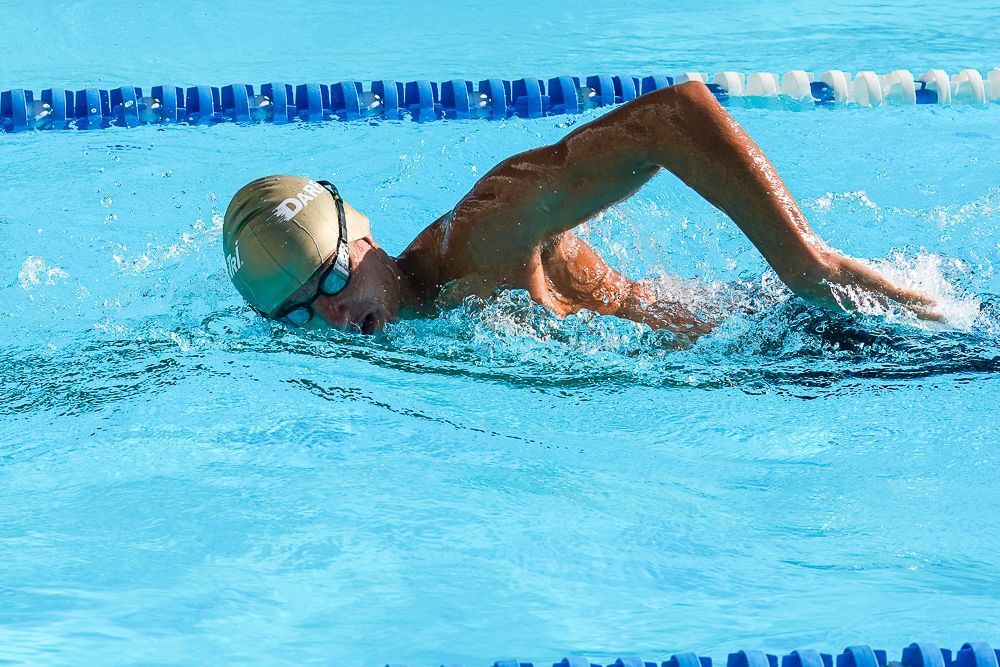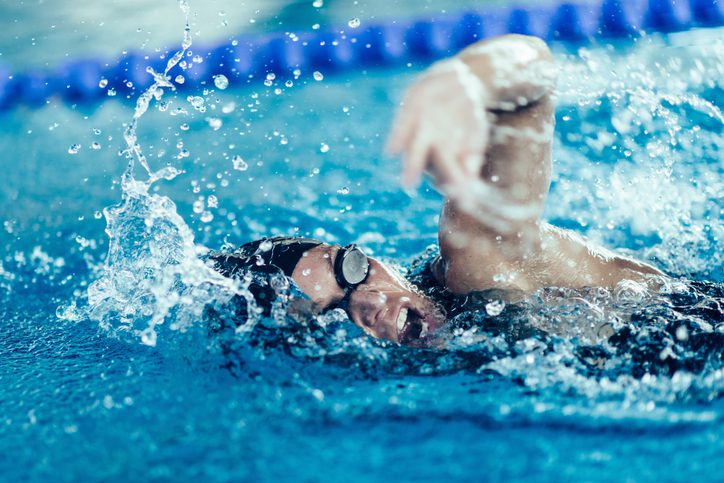Breathe your way to a faster swim split
What's the best breathing ratio and pattern to improve your swim times?
 Photo by:
Kevin Mackinnon
Photo by:
Kevin Mackinnon
Swimming is different from land-based sports in many ways. One of those is that it highly breath-restricted. This means that you can only breathe at certain specific points during the stroke cycle – not just whenever you want. Although this is somewhat true in other sports– for example people tend to breathe out in time with the most forceful part of their pedal stroke – if they choose to breathe at an “off” time or suddenly change their breathing rate while running or biking, they can do so without worrying about getting an unexpected mouthful of water. This is one of the reasons that it is important to and pay attention to our breathing pattern when swimming.
One of the most common breathing patterns in swimming, and one that is encouraged in a lot of newer swimmers, is to breathe every three strokes – stroke, stroke, stroke, breathe, repeat. This sets up a rhythm where you alternate the side you breathe on with every breath. When learning to swim this is very useful because it helps ensure that you will develop a more symmetrical stroke, without any imbalances created by breathing only on one side.
Breathing Patterns
However, when swimming at harder intensities, it can be hard to maintain this pattern. If you switch to breathing every two strokes – stroke, stroke, breathe, repeat – you get almost 50 per cent more breaths per length. This helps to keep your body working aerobically for longer. For this reason, it is fine to switch to breathing every two strokes when working hard. If you watch top distance freestyle swimmers like Katie Ledecky or Summer McIntosh, this is what they are mostly doing during their races. But what about developing asymmetries (muscle imbalances)? You can avoid this by always looking at the same side of the pool. That way on half of the lengths you swim you will be breathing to the right, and on half of the lengths you swim you will be breathing to the left and avoid overall asymmetrical development. Another option is to breathe every two, then every three, then every two again etc. This allows more breaths per length, while still having the advantage of regularly alternating the side you breathe on.

Stroke correction
Great, so now there’s a solid rationale for breathing every two or every three strokes, so why would you ever do anything else? Breathing less frequently can help you work on other aspects of your stroke. When you aren’t breathing as much you can develop a better understanding of the “baseline” movements that your body makes when not interrupted by a breath. This makes it easier to be aware of how your breathing might be affecting your normal stroke, which is something we want to avoid. Your stroke should look the same whether breathing or not (apart from turning your head up to get air).
Many swimmers like this awareness of their movements between breaths and become more comfortable breathing every four or five strokes so that they can feel the “flow” of their body’s movements without the disruption in the rhythm created by breathing. If this is helpful to you, go ahead and do it.
Go Long: Endurance Swim Training for Ironman and Half-Ironman
Breath control
If you breathe less, you can also work on being in better control of your drive to breathe. While there is limited physiological benefit to depriving yourself of oxygen for short periods of time – your lung capacity isn’t going to increase and you certainly aren’t going to grow gills – if you practice it, you can habituate yourself to the discomfort you experience when doing this. Over time, this can reduce your anxiety when swimming – especially when the unexpected happens, like a wave splashes up into your face during a race when you turn to breathe. If you practice this enough, a missed breath won’t even phase you and you can just keep on swimming instead of immediately jumping up into breaststroke to gasp for air.
Breath ratios
Overall, there are many reasons to play around with your breathing ratio. Some ratios are better for hard sets, some for balancing out your stroke, some for feeling the rhythm and flow of the water and some for mentally preparing yourself for what might happen in a race. Mix it up and you’ll be able to get the most out of your swimming in any situation.
Darian Silk is a triathlon coach and Clinical Exercise Physiologist based in Toronto. Read more about Darian here or email him at darian@teamatomica.com. You can also check out his TrainingPeaks profile here.
